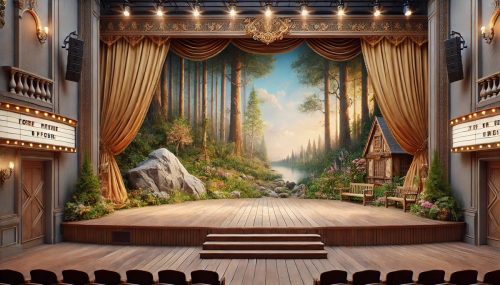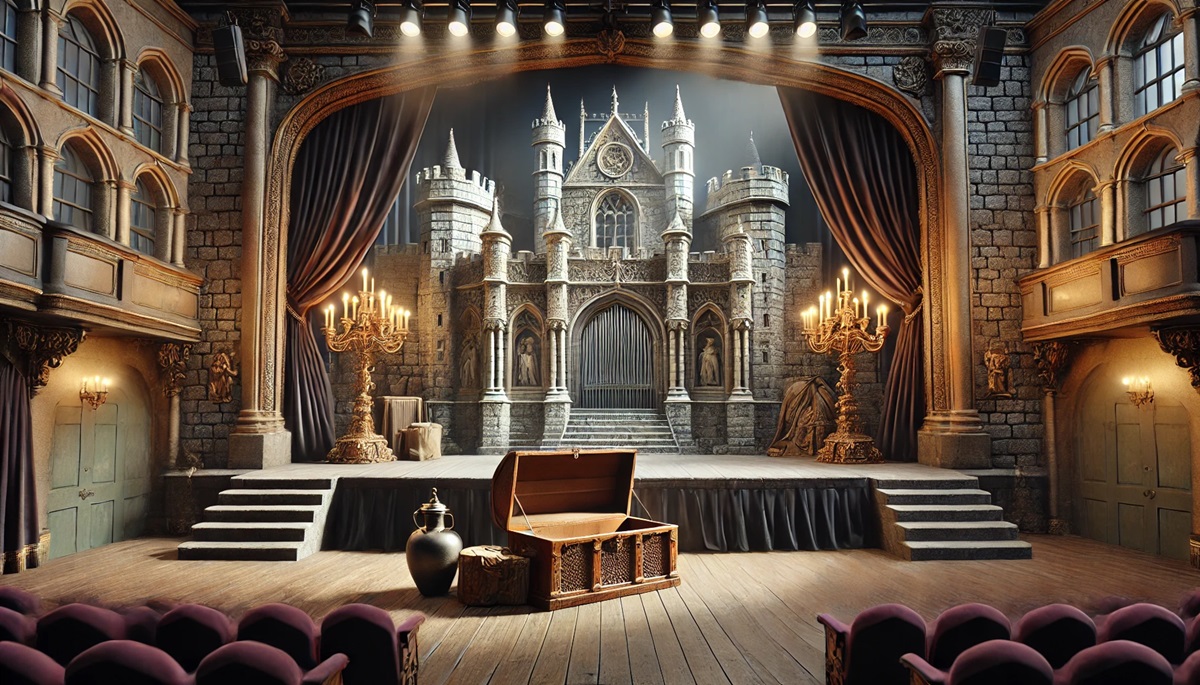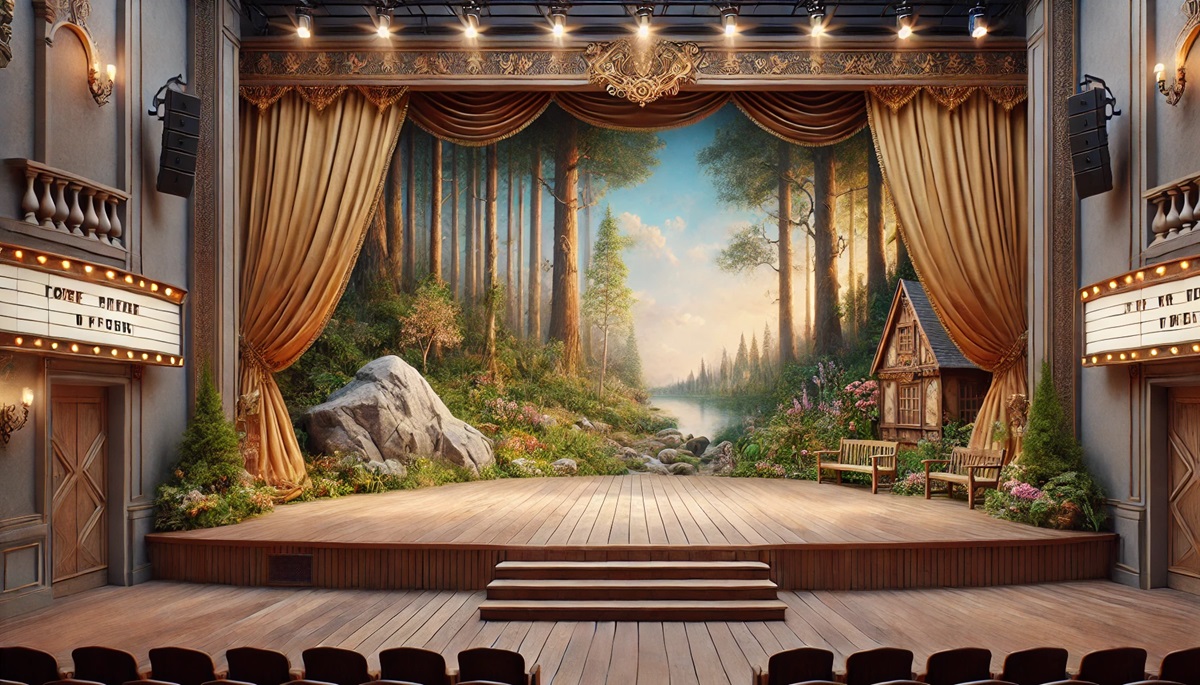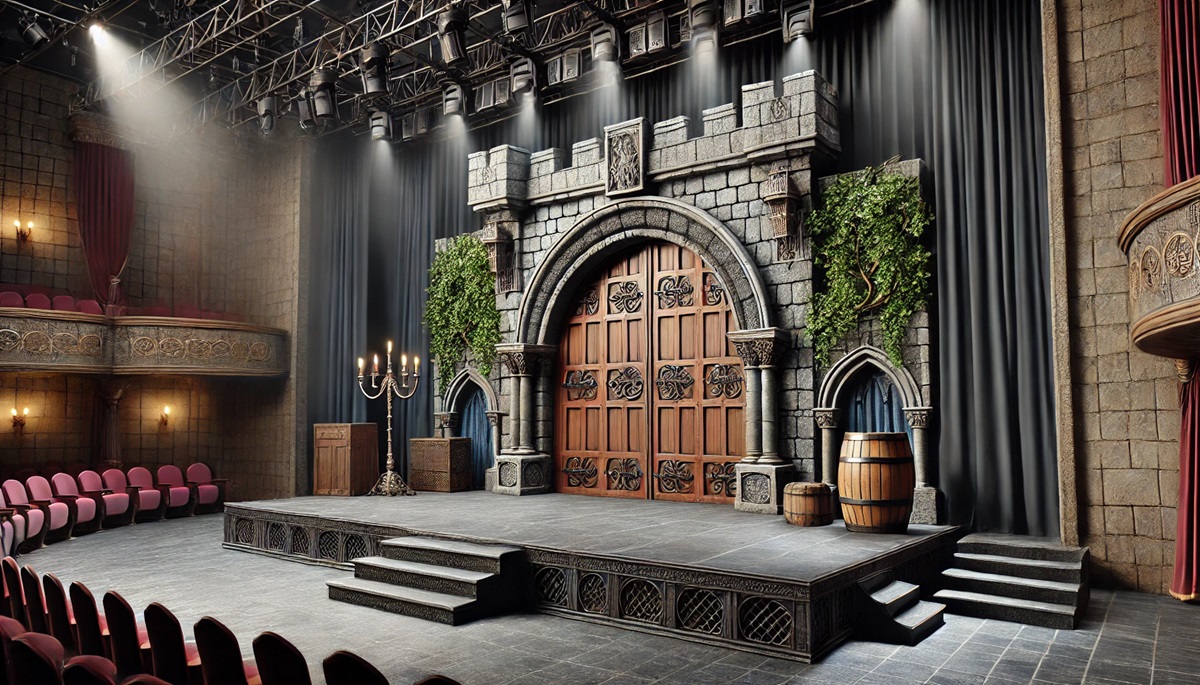Theatre Stage Props
Theatre Stage Props
We Build Custom 3D Theatre Stage Props
The Transformative Power of Theatre Stage Props: Crafting Stories Through Objects
In the realm of theatre, the magic that unfolds on stage relies not just on actors’ performances but also on the intricate details that surround them. Among these details, stage props play a vital role, serving as the tangible elements that bring scripts to life. From a single teacup to an elaborate throne, props are the unsung heroes of storytelling, enhancing narratives and enriching the emotional landscape of performances. This blog will delve into the significance of theatre stage props, the creative processes behind their design and fabrication, iconic examples that have left a mark in the theatrical world, and the impact they have on both performers and audiences.
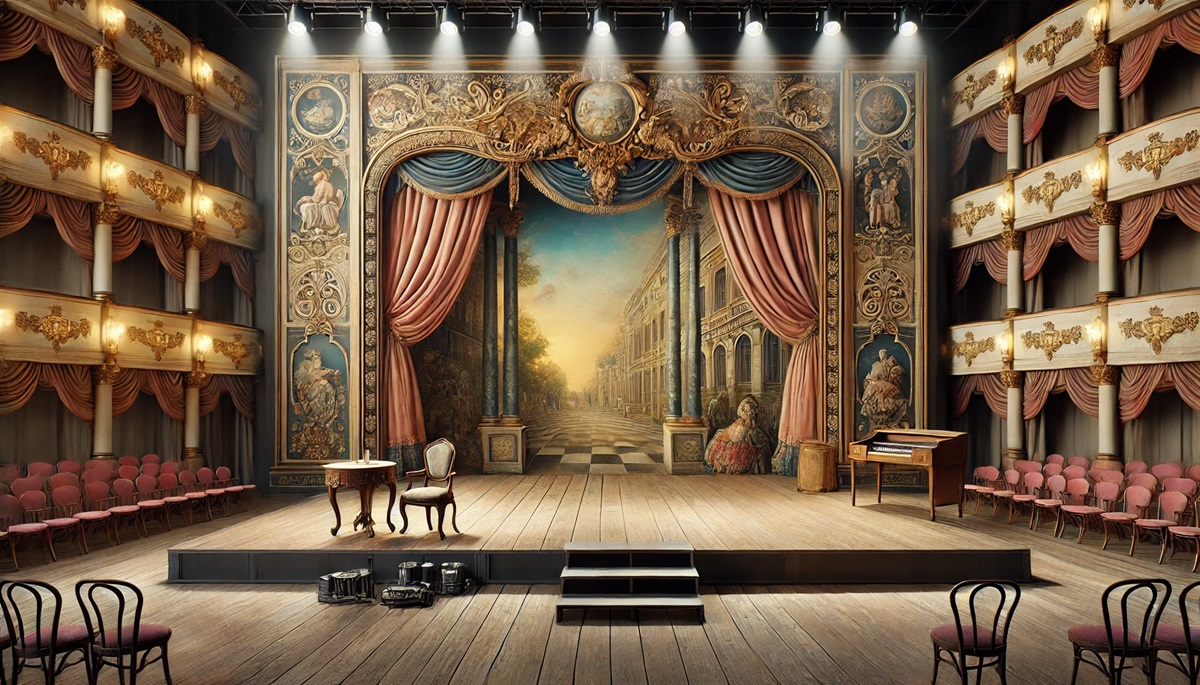
Understanding the Importance of Theatre Stage Props in Storytelling
At their core, theatre stage props are objects used by actors to tell a story. They help to set the scene, provide context, and convey information about characters and their circumstances. The importance of props in storytelling can be summarized through several key functions:
- Creating a Sense of Place: Props establish the environment of a production, transporting audiences to different settings. A meticulously designed prop can evoke a specific time and place, helping to anchor the audience in the narrative. For example, a vintage typewriter may suggest a 1920s setting, while a smartphone indicates a contemporary story. By creating a believable world, props enhance the overall experience of the play.
- Character Development: The use of props can reveal essential details about a character’s personality, background, and motivations. A character who clutches a worn-out teddy bear may evoke feelings of nostalgia or vulnerability, while one wielding a sword could suggest bravery or aggression. These interactions with props help audiences connect with characters on a deeper level, adding layers to their development.
- Symbolism and Themes: Many props serve as symbols that underscore the themes of a production. For instance, a broken clock might symbolize the passage of time or the idea of being stuck in the past. By incorporating symbolic props into the narrative, playwrights and directors can encourage audiences to explore deeper meanings and engage in critical thinking about the story.
- Enhancing Visual Storytelling: Theatre is a visual medium, and props contribute significantly to the visual storytelling process. The colors, textures, and designs of props can help create a specific atmosphere or mood. A bright, cheerful prop can evoke happiness, while dark, foreboding objects might create tension. Props are a critical part of the visual language of theatre, aiding in the overall aesthetic of the production.
- Facilitating Action and Interaction: Props often serve functional purposes that allow for action and interaction within the story. Characters may use props to communicate, solve problems, or express emotions. For instance, a character may pour a drink, hand over an important document, or use a tool in a moment of crisis. These interactions help to drive the narrative forward and engage the audience.
The Collaborative Process Behind Theatre Stage Prop Creation
The creation of theatre stage props is a collaborative effort that brings together a diverse range of artists and craftsmen. This process typically involves several stages, each requiring creativity, skill, and careful planning.
- Concept Development: The journey of creating stage props begins with concept development. Directors, set designers, and prop masters collaborate to establish the overall vision for the production. They analyze the script, discuss character arcs, and identify the specific props needed to enhance the narrative. This brainstorming session sets the foundation for the entire prop-making process.
- Research and Inspiration: After defining concepts, the design team conducts research to gather inspiration. This phase may involve exploring historical references, artwork, and photographs that relate to the time period or setting of the play. Designers might visit museums, antique shops, or libraries to find authentic items that can inspire their creations. This research is crucial for ensuring that props accurately reflect the world of the story.
- Design Sketches and Models: Once designers have gathered inspiration, they create sketches and models of the props. These initial designs outline the size, shape, and materials needed for each item. Creating models allows the team to visualize how props will fit into the overall set, helping to identify any potential issues before moving into production.
- Material Selection: The choice of materials is critical in prop-making. Designers consider factors such as weight, durability, and visual appeal when selecting materials. Common choices include wood, foam, plastic, metal, and fabric. For example, lightweight materials may be used for props that need to be easily moved by actors, while more robust materials may be chosen for items that require stability and durability.
- Construction and Fabrication: Once the designs are finalized and materials selected, the construction phase begins. Skilled artisans and craftsmen bring the designs to life using various techniques, such as woodworking, metalworking, sewing, and painting. The construction process involves cutting, shaping, and assembling the materials to create the final props. Attention to detail is crucial at this stage to ensure that the props meet the desired specifications.
- Painting and Finishing Touches: After the primary construction is complete, props undergo a finishing process to enhance their appearance. This includes painting, weathering, and adding textures to achieve a realistic look. For instance, a wooden table may be painted to appear aged and worn, while a treasure chest might be adorned with intricate details to emphasize its importance in the story. These finishing touches elevate the props and ensure they align with the overall aesthetic of the production.
- Installation and Rehearsals: Once the props are completed, they are installed on stage. The prop master collaborates with the director and set designer to ensure that each item is placed correctly within the set. During rehearsals, actors practice their interactions with the props, allowing the production team to make any necessary adjustments to ensure everything runs smoothly during performances.
Iconic Examples of Theatre Stage Props That Made Their Mark
Throughout the history of theatre, certain stage props have become iconic, leaving a lasting impact on audiences and influencing future productions. Here are a few notable examples that highlight the creativity and significance of stage props:
- The Rose in “Romeo and Juliet”: In Shakespeare’s classic play, the rose symbolizes love and beauty. The famous line, “A rose by any other name would smell as sweet,” underscores the importance of this prop in conveying the themes of love and desire. Its presence on stage evokes powerful emotions and resonates with audiences across generations.
- The Tramp’s Cane in Charlie Chaplin’s Films: Charlie Chaplin’s character, the Tramp, is often seen with his cane, which serves as a signature prop in many of his films. The cane not only aids him in walking but also becomes a tool for comedic gags and visual storytelling. Its versatility exemplifies how a simple prop can enhance character development and humor.
- The Magic Wand in “Harry Potter”: In the “Harry Potter” film series, wands are essential props that symbolize power and magic. Each character’s wand is unique, reflecting their personality and abilities. The wands serve as visual cues for the audience, helping to establish the magical world and enhancing the overall cinematic experience.
- The Red Dress in “The Handmaid’s Tale”: In the television adaptation of Margaret Atwood’s novel, the red dress worn by the Handmaids serves as a powerful symbol of oppression and resistance The stark color and design convey the bleakness of the characters’ lives while also emphasizing themes of individuality and rebellion. This prop has become emblematic of the story, sparking discussions about gender and power.
- The Green Light in “The Great Gatsby”: In both the novel and its adaptations, the green light at the end of Daisy Buchanan’s dock serves as a potent symbol of Gatsby’s dreams and aspirations. The light represents hope, desire, and the unattainable, making it a central prop in the story’s exploration of the American Dream.
The Emotional Impact of Theatre Stage Props on Audiences
The emotional power of stage props can significantly affect audience engagement and connection to the narrative. Through careful design and placement, props can enhance the emotional landscape of a performance, allowing viewers to engage with the story on a deeper level.
- Eliciting Emotional Responses: Well-crafted props can elicit strong emotional responses from audiences. A character holding a cherished object, such as a locket or photograph, can evoke feelings of nostalgia and longing. Similarly, a prop that signifies loss or conflict, like a broken chair or shattered vase, can create tension and empathy. By tapping into these emotions, props deepen the audience’s investment in the story.
- Creating Relatability: Props can help audiences relate to the characters and their experiences. Everyday items, like a coffee cup or family photo, make characters more relatable and human. When viewers see props that mirror their own lives, they can connect with the narrative on a personal level, enhancing their emotional investment in the story.
- Enhancing Dramatic Moments: Props can intensify dramatic moments, heightening the emotional stakes of a scene. For instance, a character gripping a weapon during a tense confrontation can create a palpable sense of danger and urgency. The presence of a prop can amplify the stakes of a situation, drawing the audience into the conflict and making them feel the tension.
- Facilitating Memory and Reflection: Props can serve as visual reminders of key themes and moments in a story. When audiences recall a performance, specific props may trigger memories and reflections on the characters’ journeys. This lasting impact underscores the importance of props in creating memorable experiences.
The Challenges of Creating Theatre Stage Props: Navigating Creativity and Practicality
While the art of creating theatre stage props is rewarding, it is not without its challenges. Prop-makers often face constraints that require them to navigate creativity while adhering to practical limitations.
- Budget Constraints: Many productions operate within tight budgets, which can limit the scope of prop-making. Prop designers must be resourceful, finding creative solutions to maximize their resources. This may involve repurposing existing props, utilizing cost-effective materials, or collaborating with local artisans who can provide unique items at lower costs.
- Time Constraints: The timeline for prop-making can be a significant challenge, especially when productions are on a tight schedule. Prop designers must work efficiently to ensure that all items are completed and ready for rehearsals. Effective project management and organization are essential to navigate the demands of time constraints.
- Logistical Challenges: Transporting and storing large or delicate props can pose logistical difficulties. Prop makers must consider how to safely move and store items while ensuring they remain in pristine condition. This requires thoughtful planning and creative solutions to prevent damage during transportation and handling.
- Balancing Artistic Vision with Practical Needs: Prop makers must strike a balance between their artistic vision and the practical needs of the production. This often involves collaborating with directors and actors to ensure that props not only look great but also serve their intended purpose in the narrative. Flexibility and open communication are key to achieving this balance.
Celebrating the Craftsmanship of Theatre Stage Props: Honoring the Artists Behind the Magic
The artistry behind theatre stage props deserves recognition and celebration. Each prop is a labor of love, reflecting the skills and dedication of the individuals involved in its creation. Here are a few aspects that highlight the craftsmanship of prop-making:
- Skill and Expertise: Prop-making is a specialized craft that combines various skills, including woodworking, painting, sculpting, and textile work. Prop makers often possess a diverse skill set, allowing them to tackle a wide range of projects and adapt to different artistic styles. Their expertise contributes to the overall quality and impact of the props they create.
- Innovation and Creativity: The world of prop-making thrives on innovation and creativity. Prop designers continually push the boundaries of traditional methods, exploring new materials, techniques, and concepts. This commitment to experimentation fosters a dynamic environment where artistic possibilities are limitless.
- Community and Collaboration: The prop-making community is filled with passionate individuals who share a love for storytelling and creativity. Collaboration between prop makers, set designers, actors, and directors creates a sense of camaraderie, allowing for the exchange of ideas and inspiration. This collaborative spirit enriches the creative process, resulting in exceptional performances that resonate with audiences.
- Legacy and Impact: The impact of stage props extends beyond the performance itself. Iconic props often become part of theater history, remembered for their contribution to memorable moments in storytelling. They inspire future generations of artists and remind us of the enduring power of creativity in the performing arts.
The Future of Theatre Stage Props: Innovations and Emerging Trends
As technology and design continue to evolve, the world of theatre stage props is experiencing exciting innovations and emerging trends. These advancements are shaping the way props are designed, constructed, and utilized in performances, offering new possibilities for creativity and storytelling.
- Digital and Interactive Props: The integration of technology in stage props is becoming increasingly prevalent. Digital projections and interactive elements allow for dynamic storytelling experiences. For instance, a prop may incorporate screens that display images or animations, enhancing the visual narrative. Interactive props may also engage audiences, inviting them to participate in the performance. This blurring of the lines between actor and audience can create a more immersive experience.
- Sustainable Practices in Prop-Making: With a growing awareness of environmental issues, many production teams are adopting sustainable practices in prop-making. This includes sourcing eco-friendly materials, repurposing existing props, and reducing waste. Sustainable practices not only benefit the environment but also inspire creativity, leading to innovative prop designs that align with contemporary values.
- Modular and Transformative Props: The trend toward modular design allows for greater flexibility in prop construction. Modular props can be easily assembled, disassembled, and reconfigured, enabling productions to adapt props for different scenes or performances. This versatility saves time and resources while encouraging creativity in prop design. For instance, a modular set of furniture might allow for quick transformations between different settings, making it ideal for fast-paced productions.
- Cross-Disciplinary Collaboration: The future of theatre stage props is likely to see increased collaboration among artists from various fields, including theater, visual arts, technology, and engineering. This interdisciplinary approach fosters innovation and allows for the exploration of new materials, techniques, and concepts in prop-making. By combining skills and perspectives from different disciplines, artists can create truly unique and captivating props that push the boundaries of traditional storytelling.
The Cultural Significance of Theatre Stage Props: Beyond Entertainment
Theater stage props often reflect cultural narratives and societal themes, making them important tools for exploring contemporary issues and history. They serve as vessels for communication, allowing stories to resonate with audiences on multiple levels.
- Representing Identity and Diversity: Props can help represent diverse identities and cultures in performances. For example, specific cultural artifacts may be used to depict a character’s background or heritage, enriching the narrative and fostering understanding. This representation is crucial in promoting inclusivity and reflecting the richness of human experiences on stage.
- Exploring Social Issues: Many stage props are used to highlight social issues and provoke thought. For instance, props that symbolize oppression, such as chains or cages, can be powerful visual tools for exploring themes of freedom and justice. By incorporating these elements into performances, artists can spark important conversations about societal challenges and inspire change.
- Preserving History and Tradition: Stage props can serve as historical references, preserving the cultural heritage and traditions of specific time periods. By using authentic props that reflect historical accuracy, productions can educate audiences about the past, offering insights into the lives and experiences of those who came before us.
- Fostering Empathy and Understanding: Props can evoke empathy by illustrating the struggles and triumphs of characters. When audiences see characters interact with props that represent their challenges—be it a suitcase signifying displacement or a toy symbolizing childhood innocence—they may develop a deeper understanding of the human experience. This emotional connection is a powerful aspect of storytelling.
Conclusion: The Enduring Magic of Theatre Stage Props
In conclusion, theatre stage props are essential elements that transform performances into captivating experiences. Their significance in storytelling, the artistry involved in their creation, and their impact on audiences make them invaluable in the world of theater and film. From setting the scene to developing characters and enhancing emotional connections, props play a crucial role in the overall success of a production.
As technology and design continue to evolve, the world of theatre stage props will undoubtedly embrace new innovations, pushing the boundaries of creativity and functionality. The commitment to sustainability, collaboration, and artistic expression will shape the future of prop-making, ensuring that the legacy of theatre stage props endures for generations to come.
Ultimately, the magic of theatre stage props lies in their ability to transport audiences into new worlds, evoke deep emotions, and inspire reflection. They are not just objects on stage; they are powerful tools that facilitate storytelling, enhance performances, and leave lasting impressions. As we celebrate the art of stage props, we acknowledge their profound impact on the performing arts and the enduring stories they help tell. Whether in a grand musical, an intimate play, or a dazzling film, stage props will always play a crucial role in creating unforgettable experiences for audiences everywhere.
Checkout WhiteClouds’ 3D Props to learn more information.
Contact us today to learn more about our 3D services and how we can help you achieve your goals.
